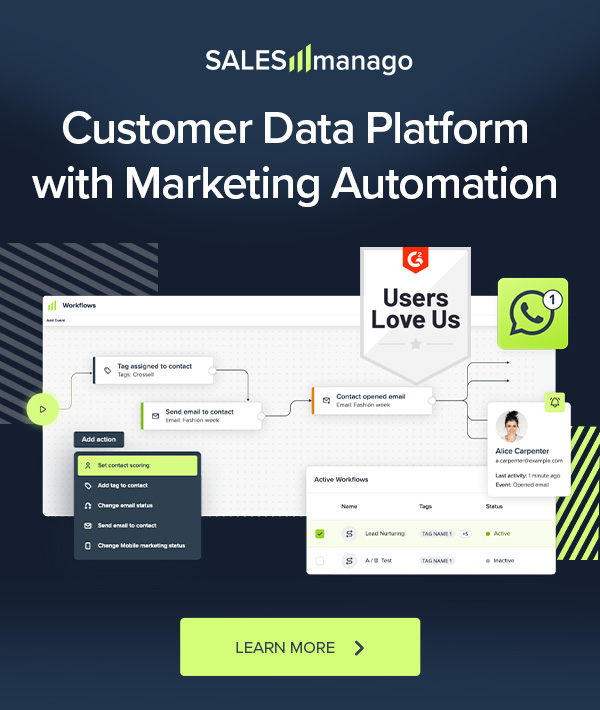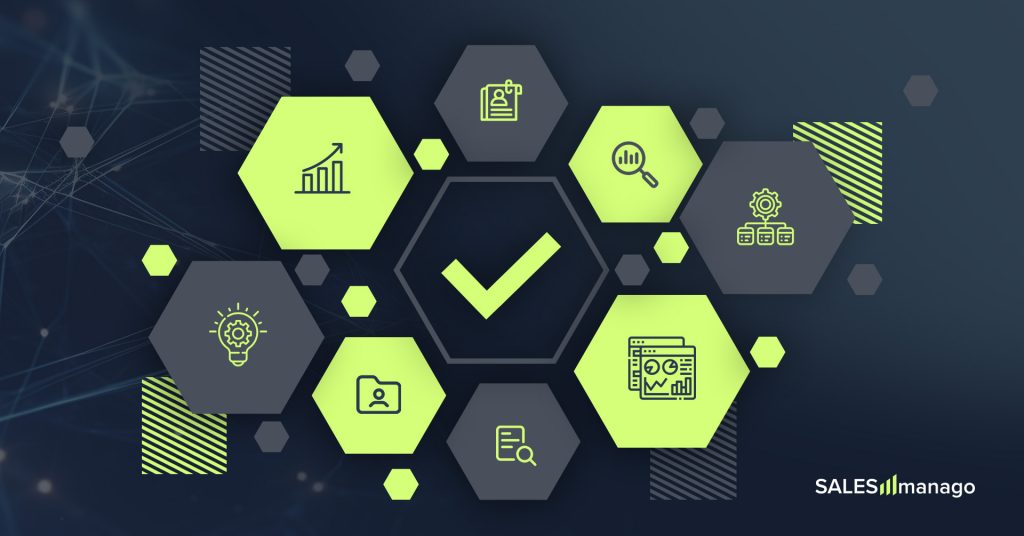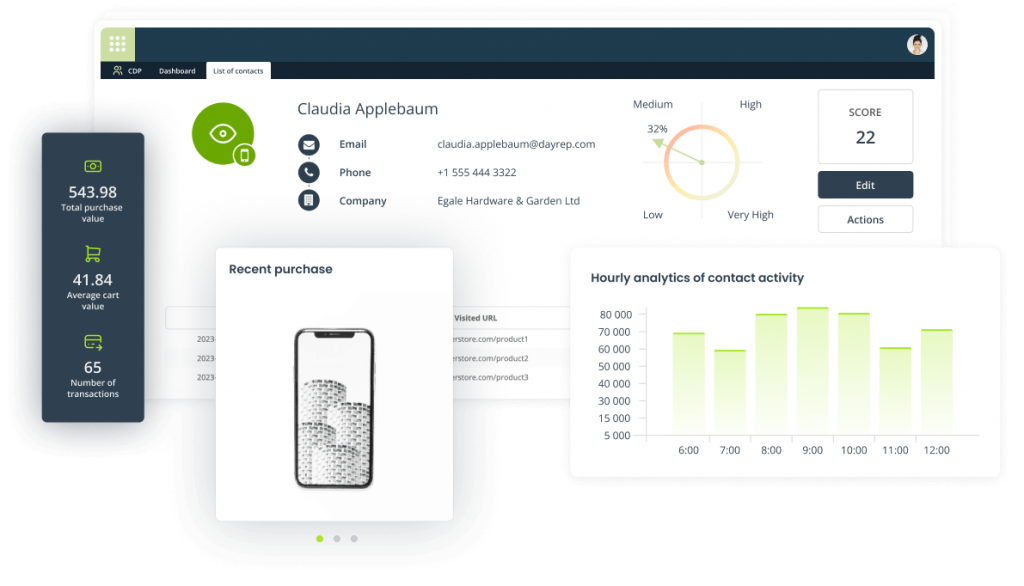
by Greg Błażewicz, CEO
Today, we will look at the notion of Customer Data Debt (CDD), its ramifications, and a strategic collaboration between CDP suppliers and eCommerce organizations to gradually eliminate the effects of data debt.
The role of Customer Data Platforms (CDPs) has become increasingly vital for businesses aiming to harness the power of data for enhanced customer experiences. However, recent findings from the Real Story Group shed light on the problems which increasing Customer Data Debt poses to eCommerce companies, when they try to enhance and streamline their understanding of the customers – i.eg. when deploying Customer Data Platform.
Understanding Customer Data Debt (CDD)
Customer Data Debt is more than a mere abstract term; it represents the monetary investment required to rectify data-related issues within an enterprise. It closely resembles technical debt, where design flaws in software or performance issues must be addressed after release. In the context of customer data, debt accrues over time due to trade-offs—borrowing data before “paying” for it. It is a cumulative burden that companies accrue when they fail to effectively manage, process, and leverage the vast amounts of consumer data they collect. This ‘debt’ manifests through outdated, inaccurate, or poorly structured data that, over time, becomes a significant impediment to strategic decision-making and effective marketing initiatives.
Business users contribute to data debt by utilizing information from diverse sources without ensuring alignment with enterprise standards for quality, consistency, availability, and security. This borrowing mirrors the concept of technical debt in software development. Similar to financial debt, customer data debt can spiral quickly, making it challenging to control and reverse the accrual. This buildup impedes the delivery of a personalized customer experience (CX), as marketers struggle to trust the accuracy, timeliness, and precision of the customer view they’re working with.
Real Story Group notes a common trend where enterprises acquire vast amounts of data around customers but fail to truly understand or profile the customers themselves. This is attributed to a historical perspective of treating customers as objects of data, where data is gathered in a way around them, rather than subjects – entities data is gathered about. This results in a large amount of data which do not produce a coherent, clear picture of a person, with needs and desires.
The Consequences of Unpaid Customer Data Debt
The repercussions of neglecting customer data debt are profound. The absence of a comprehensive “Customer 360” poses challenges in:
- accessing relevant data sources,
- consolidating fragmented customer data,
- providing incomplete customer profiles.
Businesses are confronted with problems such as:
- the inability to confidently send targeted offers,
- a lack of insight into customer relationships,
- compromised service interactions that erode brand value.
Identify and Solve
Solving customer data debt begins with acknowledging its existence and understanding its pervasiveness. Profiling customer data involves examining its influx rate, cadence, and state, answering questions about data transformations, identity resolution, tuning, matching, and the creation of a Golden Record, or 360-degree profile.
Take for example a scenario where a company stores customer data in a data lake, assured by a CDP vendor that data matching occurs. However, operational marketers faced with multiple records for one customer may lack clarity on which email address to use for a campaign. This uncertainty is a manifestation of customer data debt. The challenge lies in numerous customer or transaction tables, redundancy, and inconsistency, hindering the delivery of a hyper-personalized CX.
To address this, marketers must trace the source, recency, and context of the data, navigating upstream to identify the origin of this “polluted river”.
Addressing Customer Data Debt: Workstreams for eCommerce Companies
To tackle customer data debt, eCommerce companies should consider implementing these strategic workstreams:
- Data Ingestion: Focus on collecting key touchpoint data, invest in cleaning, establish robust pipelines, and enhance data quality and modeling.
- Data Governance: Set up protocols for data stewardship, with a particular emphasis on compliance and consent to facilitate data enrichment and activation.
- Identity Resolution: Decide on the scope, techniques, and location for resolving customer identities, ensuring a unified view across all touchpoints.
- Agile Attribute Creation: Develop an agile process for converting raw data into actionable attributes, facilitating quick adaptation to evolving business needs.
These are the tasks the most forward-looking leaders should save some budget for upfront. It will also require close collaboration between CMO, CRO, CDO and CIO/CTO to prioritize the resources required.
But eCommerce companies should not be left in their struggle with data debt alone.
Customer Data Debt and a Composable CDP
The rise of the composable CDP trend has brought customer data debt to the forefront of discussions around personalized CX. Notably, many CDP vendors offering a composable architecture framework disassociate themselves from the responsibility of addressing customer data debt within the platform. While promising a single customer view, these vendors assume that steps to prevent data debt—cleansing, identity resolution, security, and transformations—have been completed or will be outsourced downstream.
Such a short-sighted attitude is not only wrong but also results in discouragement for CDP implementation on the eCommerce side. No wonder, since eCommerce companies see more pain than gain in such deployment. According to Real Story Group, symptoms of such situation include:
- Difficult initial “MVP” deployments, as enterprises struggle to deal with core issues of data availability and quality, as well as identity resolution blockers.
- Stunted roll-outs, where enterprises lack the resources to broaden a CDP footprint beyond a single use case.
- A surprising number of CDP vendor replacements, now constituting nearly half of our CDP vendor selection advisory work.
For the sake of us all, eCommerce and vendors alike, we should cooperate to diminish Customer Data Debt.
Collaborative Strategies for CDP Vendors and eCommerce Companies
While the specter of data debt may seem daunting, hindering the deployment of a Customer Data Platform (CDP), it should not serve as a deterrent to progress. In fact, it is precisely in the face of data debt challenges that opportunities for collaboration between CDP vendors and eCommerce companies arise. Rather than viewing data debt as an impenetrable barrier, a strategic approach involves taking small, successive steps. CDP deployment should not be delayed; instead, it can serve as the catalyst for a gradual, collaborative journey toward eliminating data debt.
1. Comprehensive Data Assessment: Collaborate to conduct a thorough analysis of the existing customer data landscape, identifying areas for improvement.
Such analysis goes beyond surface-level evaluations, delving into the intricacies of data sources, quality, and integration. By working hand-in-hand, both parties can identify areas that require enhancement, whether it’s addressing inconsistencies, improving data quality, or ensuring seamless integration across diverse sources. This collaborative assessment serves as the foundation for informed decision-making, laying the groundwork for a strategic roadmap. Through a shared commitment to transparency and thorough examination, the collaborative effort can pinpoint data strengths and weaknesses, facilitating a targeted approach to data debt resolution and optimization of the Customer Data Platform’s deployment.
2. Strategic Roadmap: Develop a strategic roadmap aligning CDP deployment with gradual data debt resolution, prioritizing tasks based on impact and feasibility.
The roadmap serves as a comprehensive guide, outlining a step-by-step plan to synchronize the deployment of the Customer Data Platform with the ongoing resolution of data debt. The key lies in meticulous planning that prioritizes tasks based on their impact on the overall data landscape and the feasibility of their implementation. By strategically aligning CDP deployment with the gradual resolution of data debt, businesses can ensure a structured and efficient approach. This involves identifying and addressing high-impact areas of data debt first, gradually alleviating the burden and creating a foundation for the expanded usability of the CDP. The roadmap acts as a compass, guiding the collaborative efforts towards a unified goal of optimizing data quality, governance, and security while maximizing the benefits of a deployed CDP.
3. Customized Data Integration: Seamlessly integrate the CDP with the existing data infrastructure, offering customization options for diverse data types and formats.
CDP vendors and businesses must collaborate closely to facilitate a seamless integration process. It means understanding the intricacies of the existing data ecosystem, accommodating diverse data types, and providing customization options to handle various formats. The collaborative effort aims not only to unify data sources but also to ensure that the integration aligns with the specific needs and nuances of the eCommerce company. By fostering adaptability and customization, CDP vendors empower businesses to leverage the full spectrum of their data, overcoming compatibility challenges and optimizing the CDP’s functionality within the existing data landscape.
4. Identity Resolution: Implement robust identity resolution mechanisms within the CDP, ensuring compatibility with the specific needs of the eCommerce company.
Recognizing the complexities of the eCommerce industry, the collaborative strategy should seek to create a comprehensive and unified perspective of customer identities. By integrating advanced identity resolution within the CDP, both parties work in tandem to ensure compatibility with the specific needs of the eCommerce company. Addressing issues such as reconciling various client records, resolving identity conflicts, and expediting the identification process are all part of this. The collaborative approach seeks not only to unify customer identities across various touchpoints but also to customize the resolution mechanisms to align with the nuances of the eCommerce industry. The result is a CDP equipped with the ability to deliver a cohesive and accurate representation of customer identities, laying the groundwork for more personalized and effective customer experiences.
5. Data Quality Enhancement: Implement data quality tools and processes to cleanse and enrich customer data gradually. Offer automated solutions for standardizing data formats and eliminating inconsistencies.
The collaborative effort involves the strategic implementation of data quality tools and processes designed to systematically cleanse and enrich customer data over time. This deliberate, gradual approach ensures that data quality improvements are methodical and targeted, addressing specific pain points identified during the collaborative assessment. Simultaneously, the collaboration leverages automated solutions to standardize data formats and eliminate inconsistencies, streamlining the entire data landscape. By combining meticulous processes with automation, both parties contribute to a more robust and reliable data foundation.
6. Gradual Roll-out: Advise on a phased CDP deployment approach, aligning with the eCommerce company’s priorities and simultaneously addressing data debt in targeted areas.
CDP vendors should collaborate closely with eCommerce companies, offering strategic guidance on how to align the deployment with the company’s overarching priorities. This phased approach allows businesses to focus on specific areas of immediate impact, addressing data debt in targeted segments. By synchronizing the deployment with the eCommerce company’s priorities, the collaborative effort ensures that each phase contributes measurably to overall objectives. It can mitigate potential disruptions but also allows for a more nuanced and effective resolution of data debt. The phased rollout strategy represents a symbiotic relationship where CDP deployment and data debt resolution coalesce, enabling eCommerce companies to optimize their resources and strategically advance their capabilities.
7. Training and Support: Provide training sessions for effective CDP utilization and ongoing support for both CDP deployment and data debt resolution.
Recognizing that successful implementation extends beyond technology, collaborative strategies between Customer Data Platform (CDP) vendors and eCommerce companies underscore the importance of comprehensive training and support. CDP vendors should commit to empowering the eCommerce company’s teams through targeted training sessions, ensuring effective utilization of the CDP. They should cover not only the complexities of deploying the CDP but also address the unique aspects of data debt resolution. The collaborative effort extends beyond the initial deployment. By providing continuous training and support, both parties ensure that the eCommerce company’s teams are well-equipped to navigate through CDP, actively contribute to data debt resolution, and extract maximum value from the platform over the long term. This commitment to knowledge transfer and sustained support solidifies the collaborative partnership, fostering a culture of empowerment and adaptability within the eCommerce enterprise.
8. Continuous Monitoring: Establish monitoring mechanisms within the CDP to track progress in data quality improvements, with regular reviews and updates to the strategic roadmap.
A critical component of this collaborative strategy is the establishment of robust monitoring mechanisms within the CDP. This entails a commitment to continuous tracking and assessment of progress in data quality improvements. By integrating monitoring tools, both parties can actively gauge the effectiveness of implemented strategies, identifying areas of success and areas requiring refinement. Regular reviews and updates to the strategic roadmap are essential to adapt to evolving challenges and opportunities. This iterative approach ensures that the collaborative efforts remain aligned with the overarching goals of data quality enhancement and data debt resolution.
9. Iterative Improvement: Encourage an iterative approach to both CDP deployment and data debt resolution, fostering continuous improvement cycles based on evolving requirements.
CDP vendors and eCommerce companies should collaborate with the understanding that both deployment and data debt resolution are dynamic processes that require continuous refinement. This approach encourages a cycle of continuous improvement, wherein lessons learned from each phase inform the next. By fostering an iterative mindset, both parties can adapt strategies based on evolving requirements and emerging insights. This continuous improvement cycle becomes a powerful tool, allowing for flexibility in responding to changing market dynamics, customer behaviors, and technological advancements, ensuring that CDP deployment and data debt resolution remain responsive to the ever-changing landscape of eCommerce.
10. Collaborative Partnership: Maintain an open line of communication between the CDP vendor and the eCommerce company. Foster a collaborative partnership to address emerging challenges and explore new opportunities for data management and customer engagement.
The cornerstone of success in the collaborative efforts between Customer Data Platform (CDP) vendors and eCommerce companies is the establishment and nurturing of a strong partnership. Central to this partnership is the commitment to maintaining an open line of communication in appreciation of transparency and shared understanding of goals and challenges. In such an environment, both parties are equipped to address emerging challenges dynamically and can easily explore new opportunities in the realms of data management and customer engagement. The continuous dialogue and exchange of insights enable the collaborative effort to evolve in response to the ever-changing landscape of technology, customer behaviors, and market trends.
Wrapping Up:
In conclusion, addressing customer data debt is pivotal for eCommerce companies aiming to thrive in the data-driven era. A collaborative approach between CDP vendors and eCommerce businesses ensures not only the gradual resolution of data debt but also the successful deployment and expansion of CDPs for improved customer experiences. It’s a journey that, when undertaken thoughtfully, leads to long-term success, benefiting both businesses and their customers.
A win-win situation for all parties involved.




 Follow
Follow













![[New Feature] Shine the light on your hidden visitors with Spotlight](https://blog.salesmanago.com/wp-content/uploads/2024/04/1-9-1024x536.png)


![[New Feature] Unlock Deep Behavioral Personalization with Product Collections](https://blog.salesmanago.com/wp-content/uploads/2024/03/1-3-1024x536.png)
